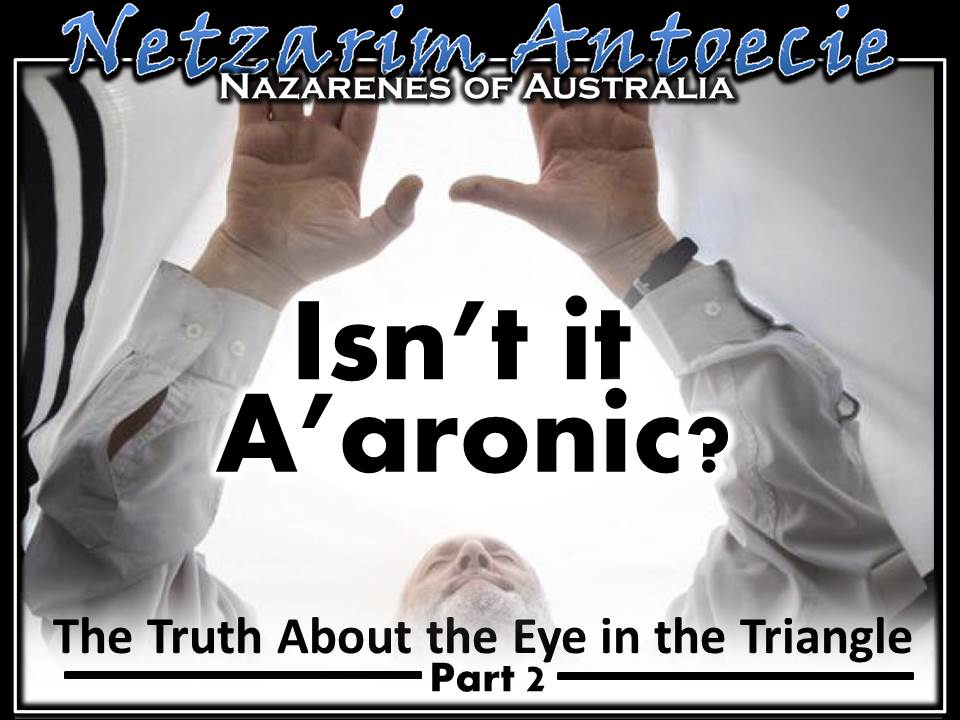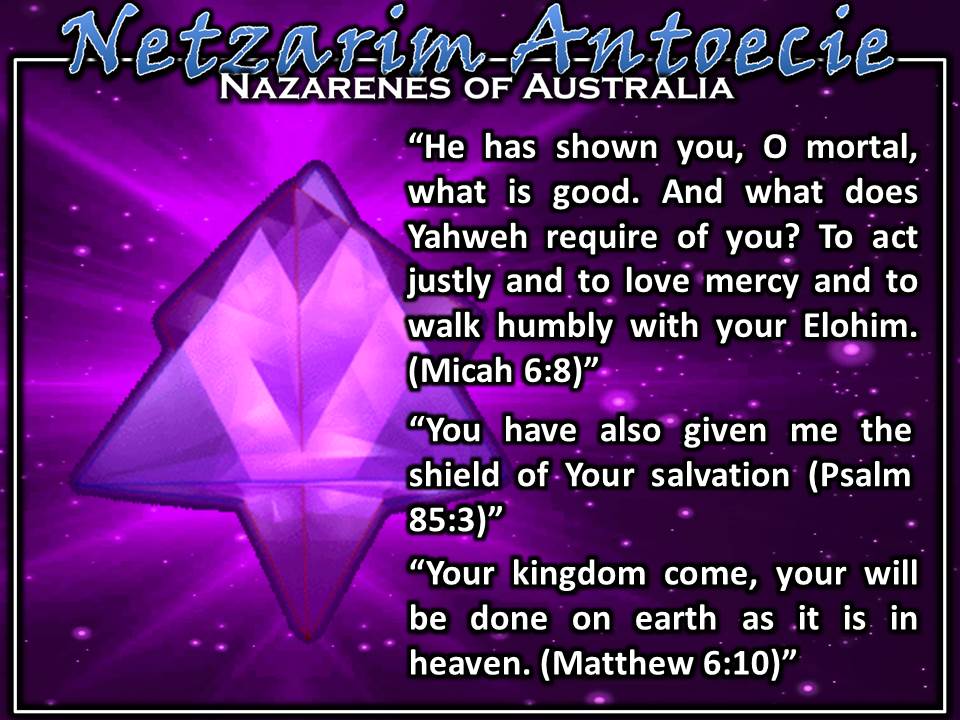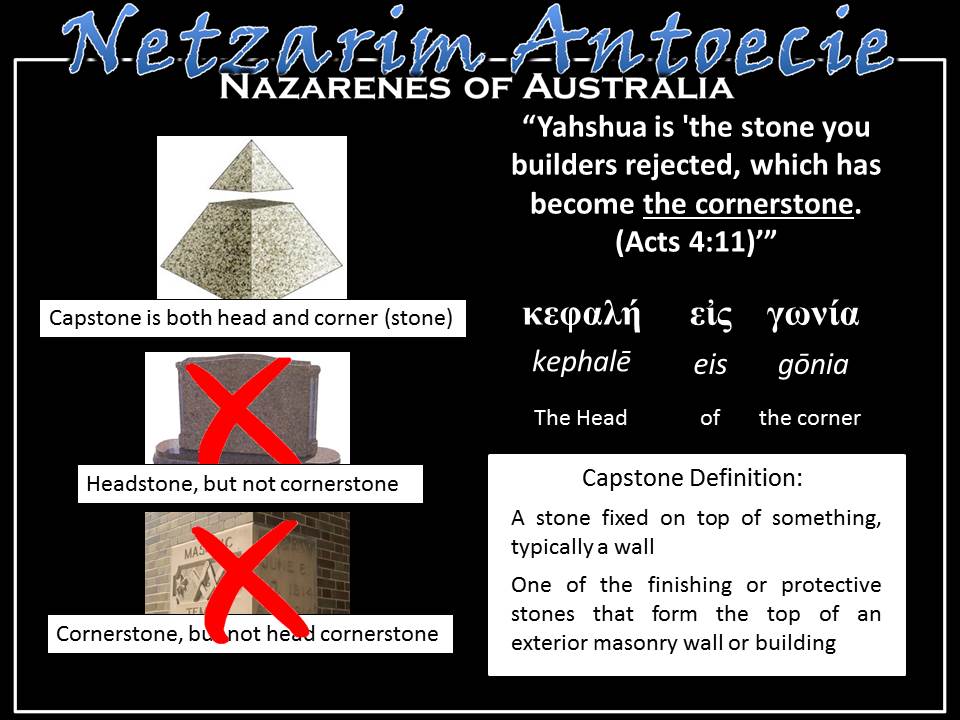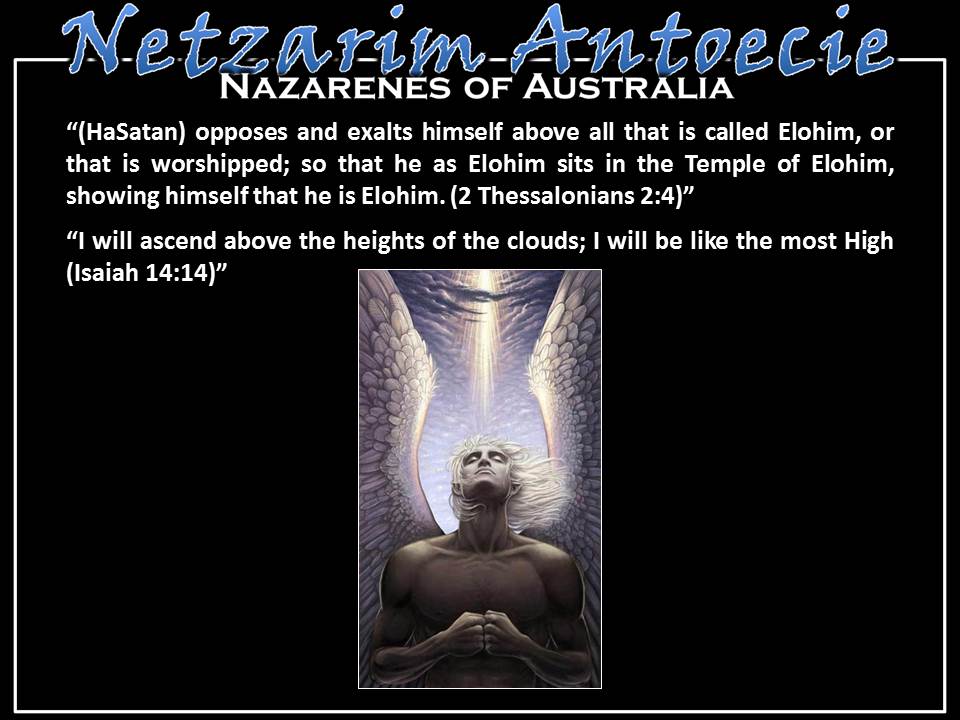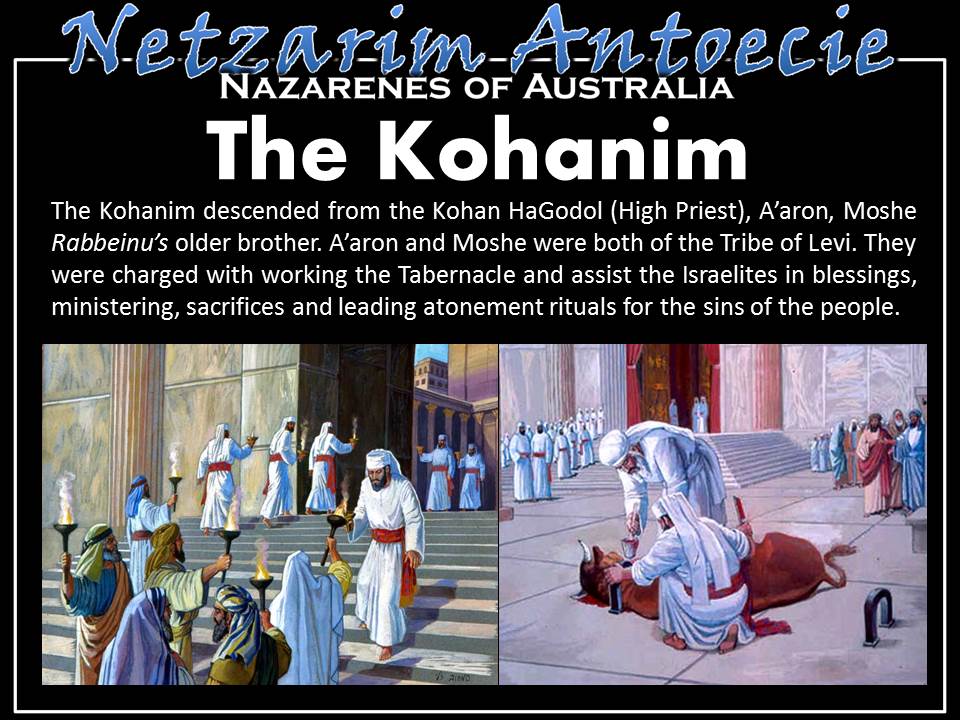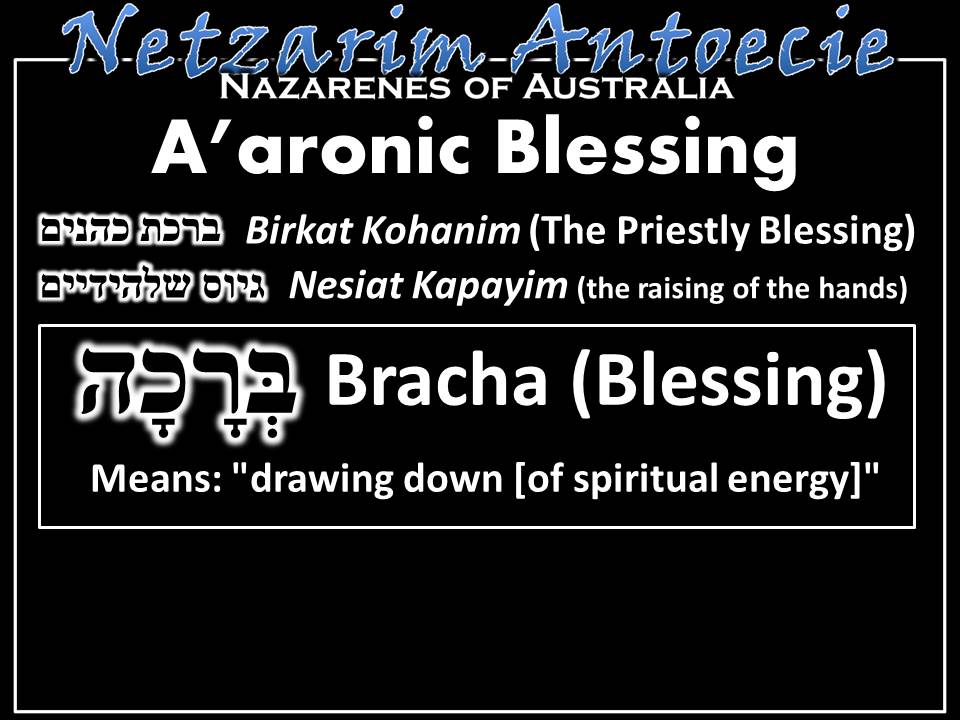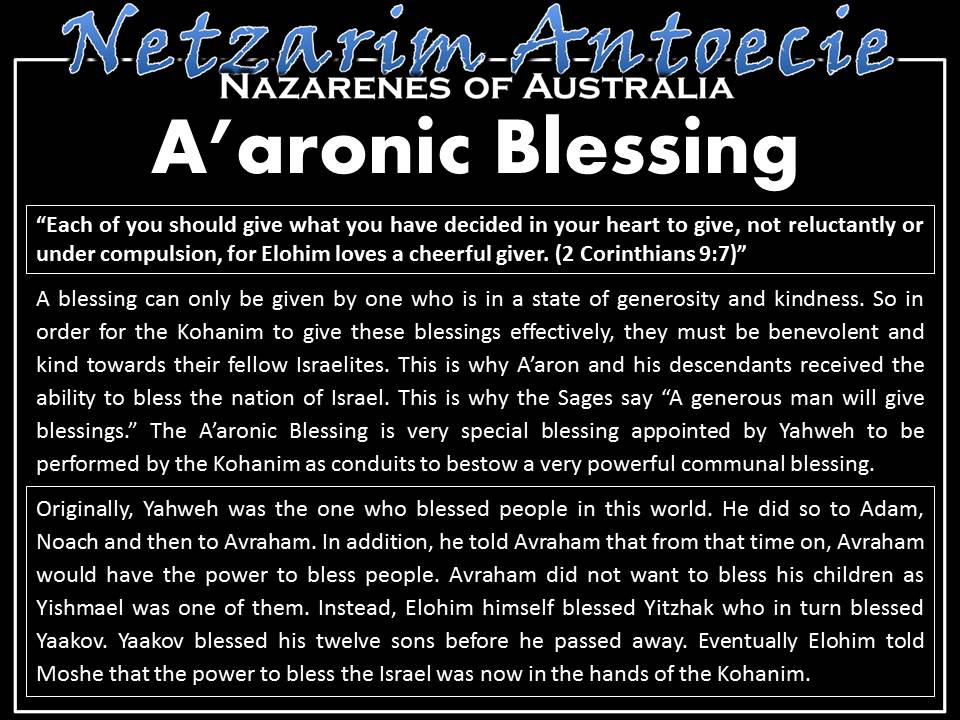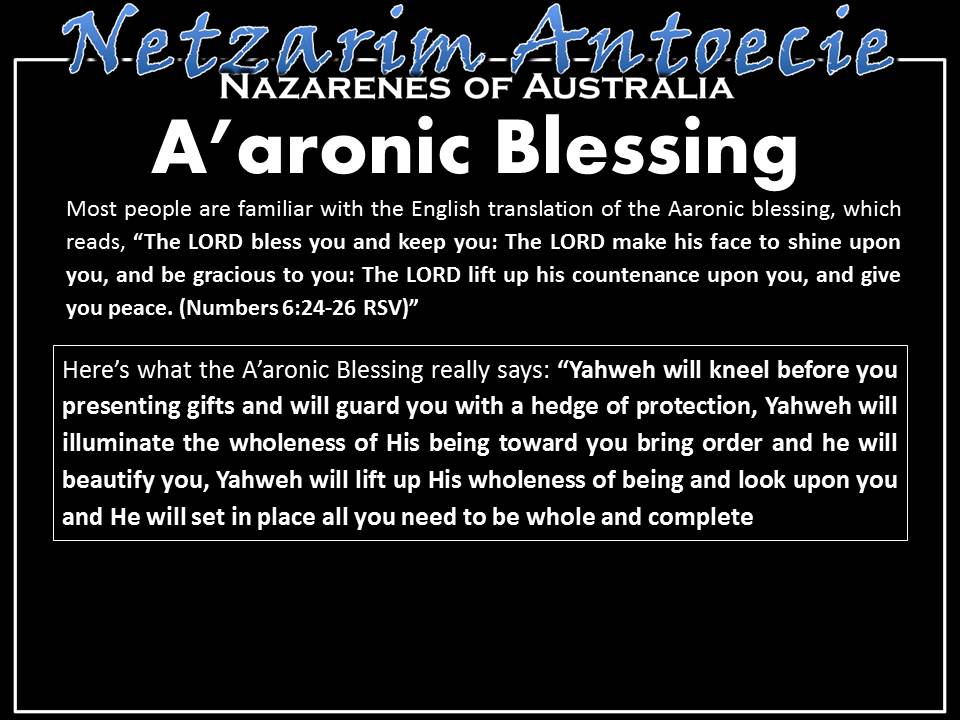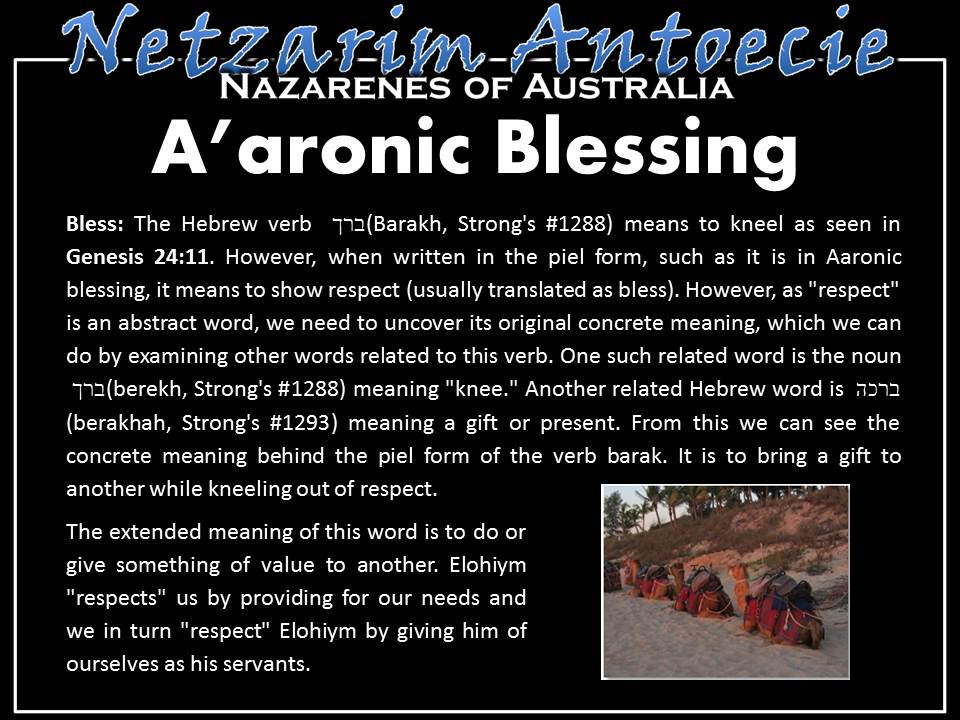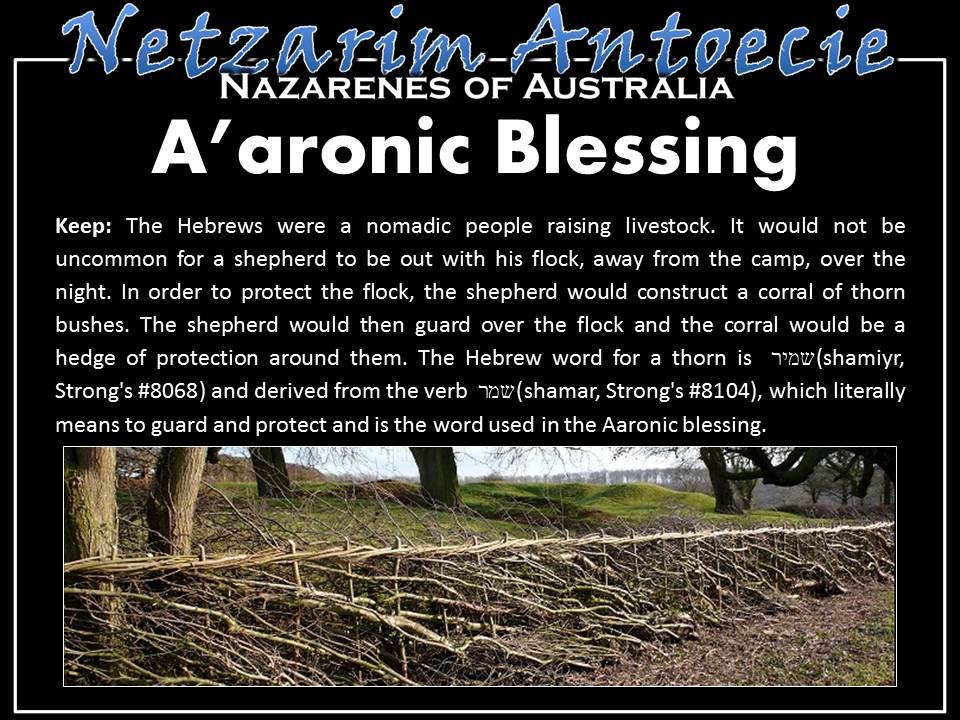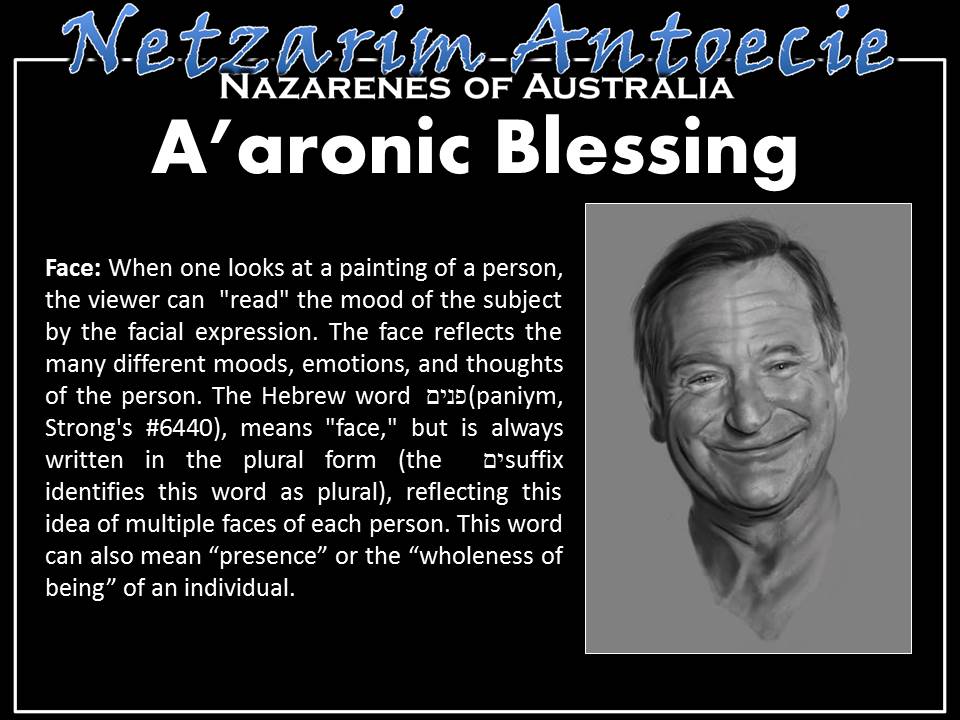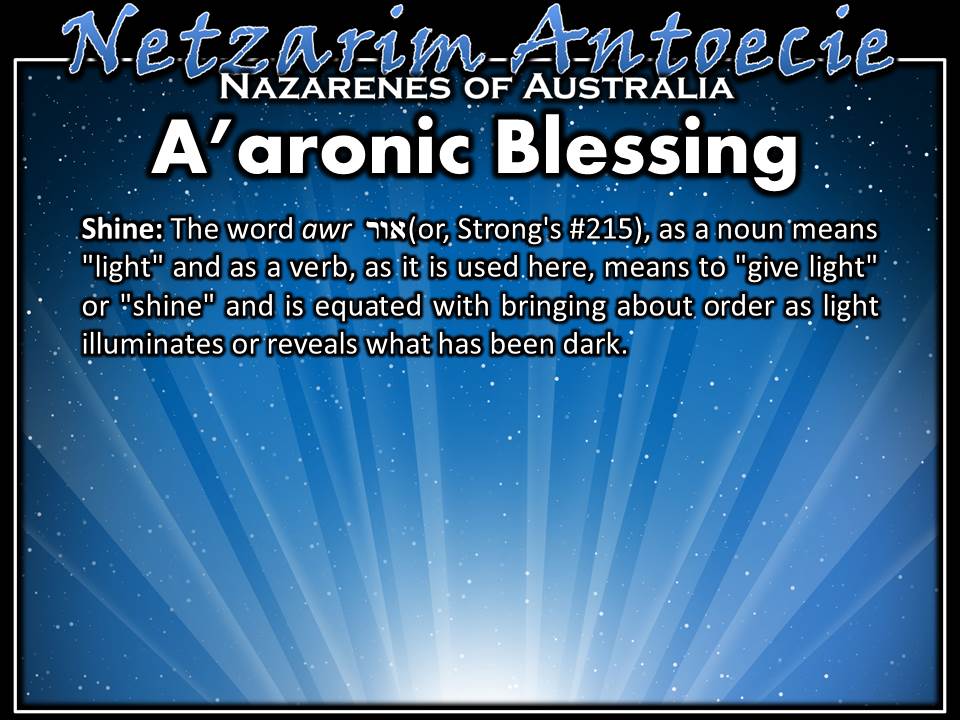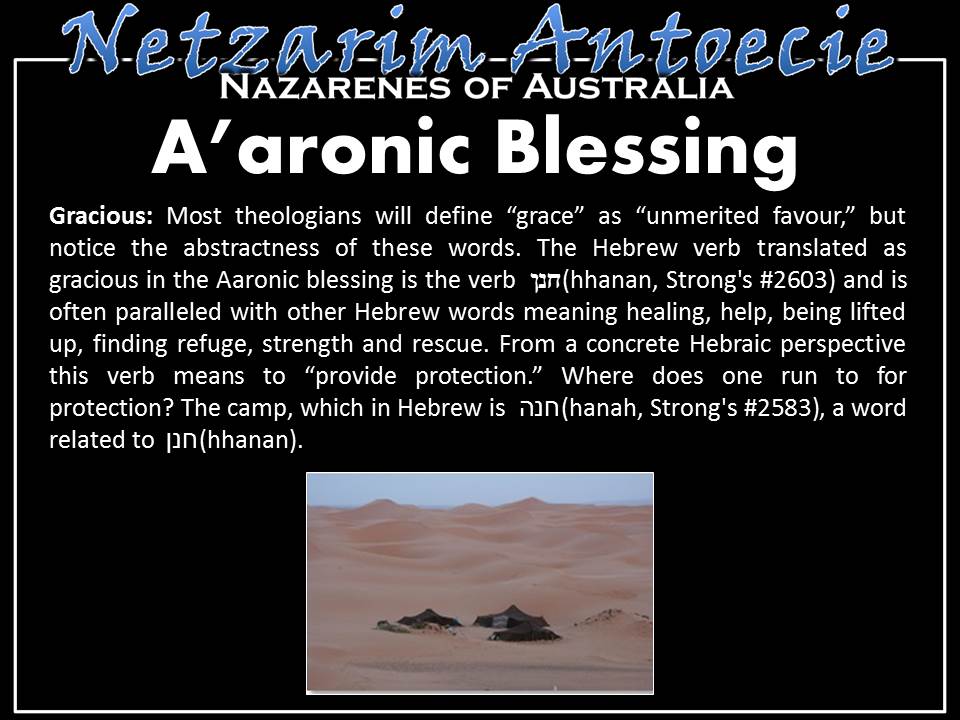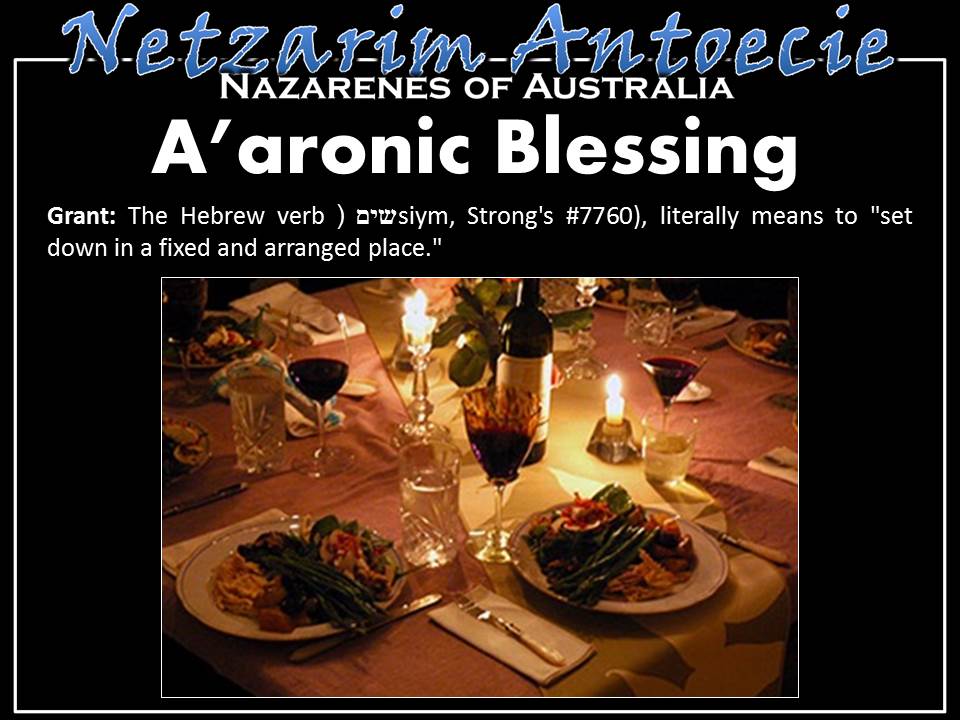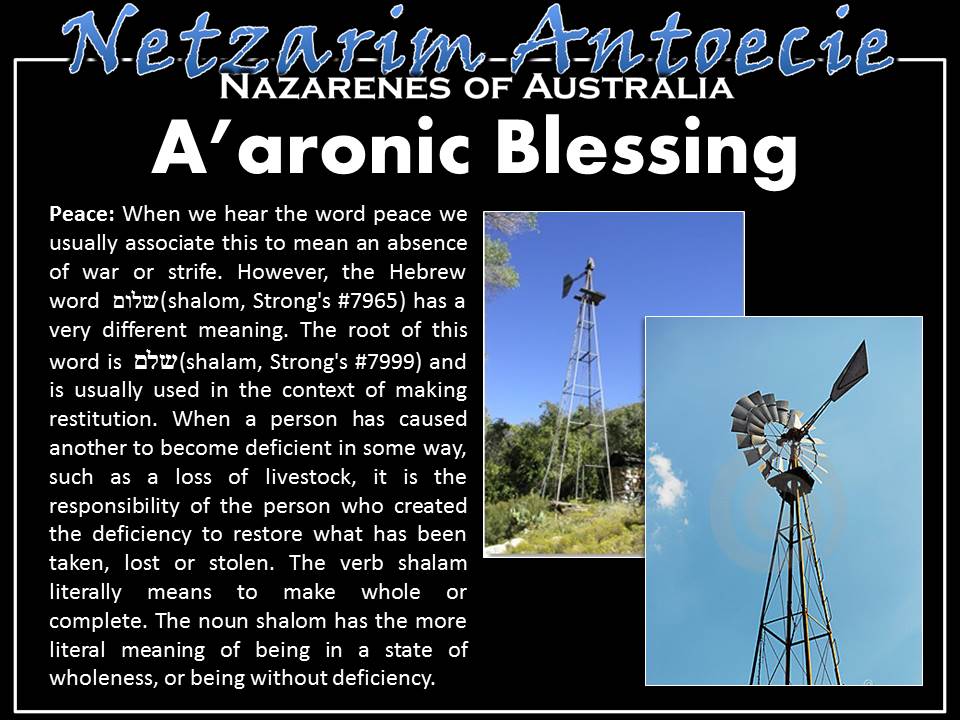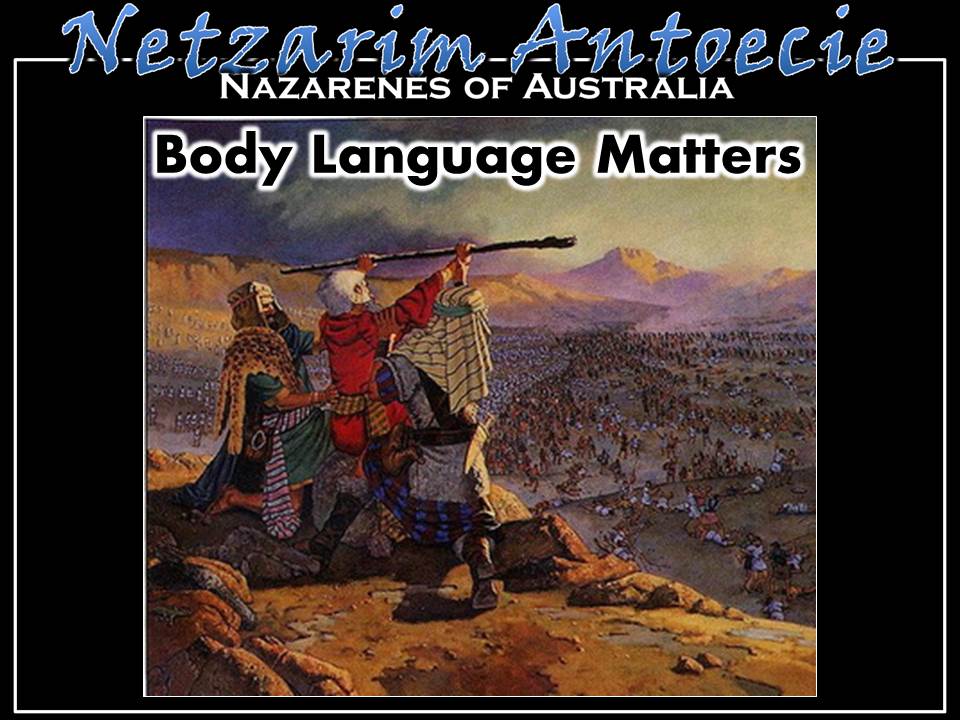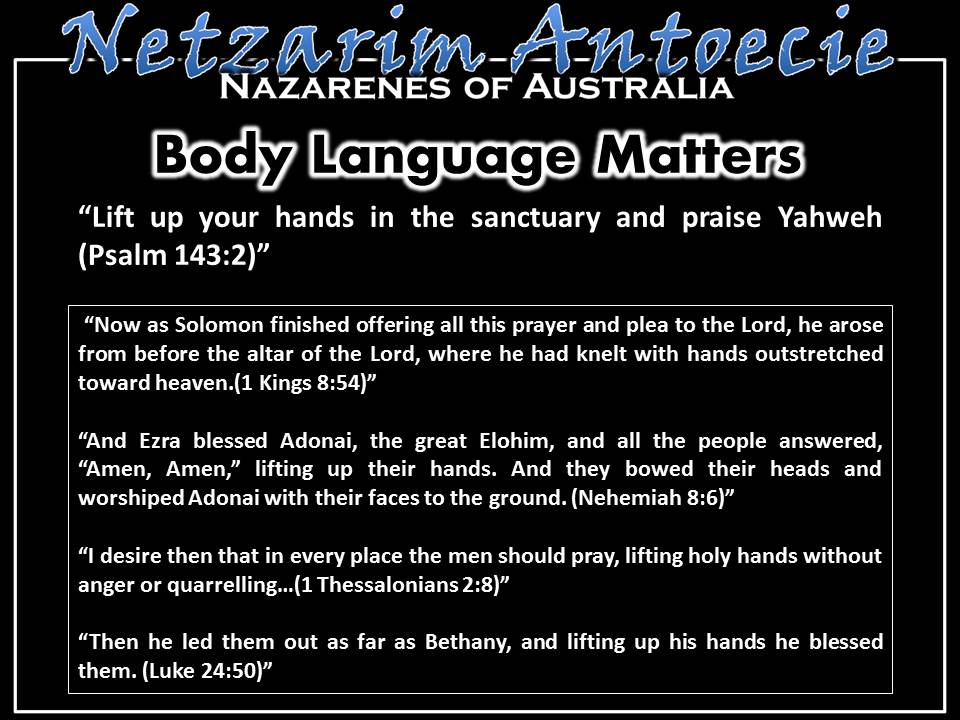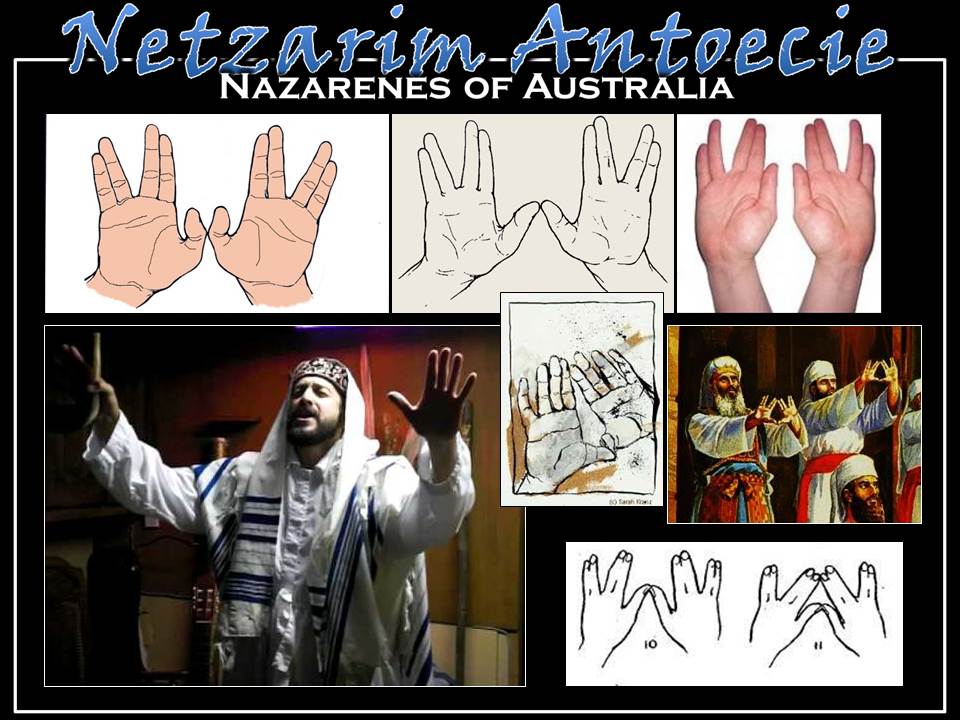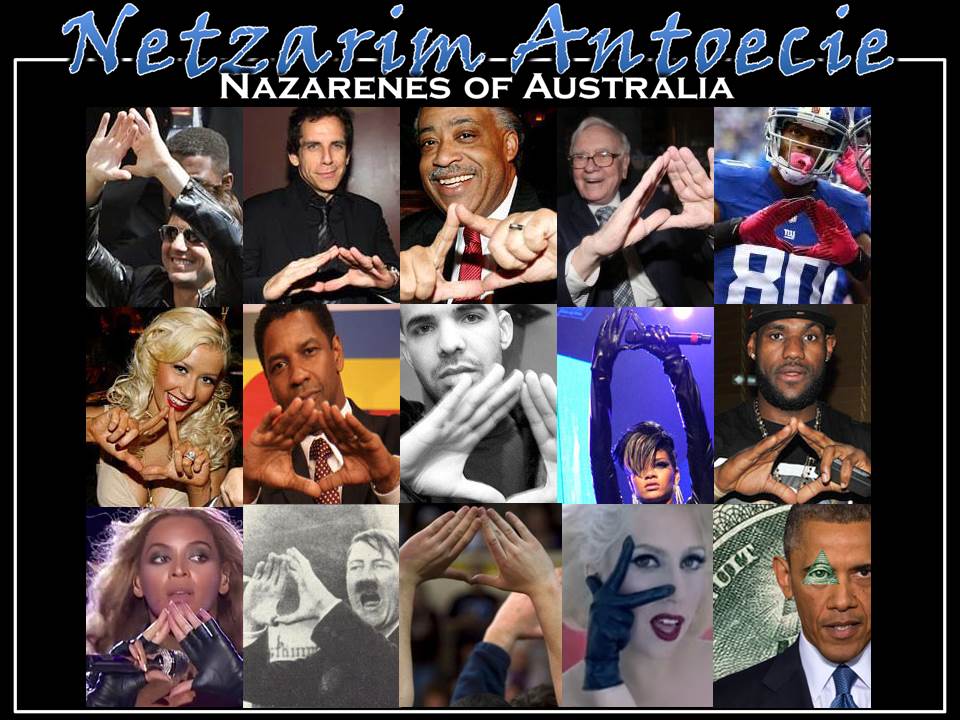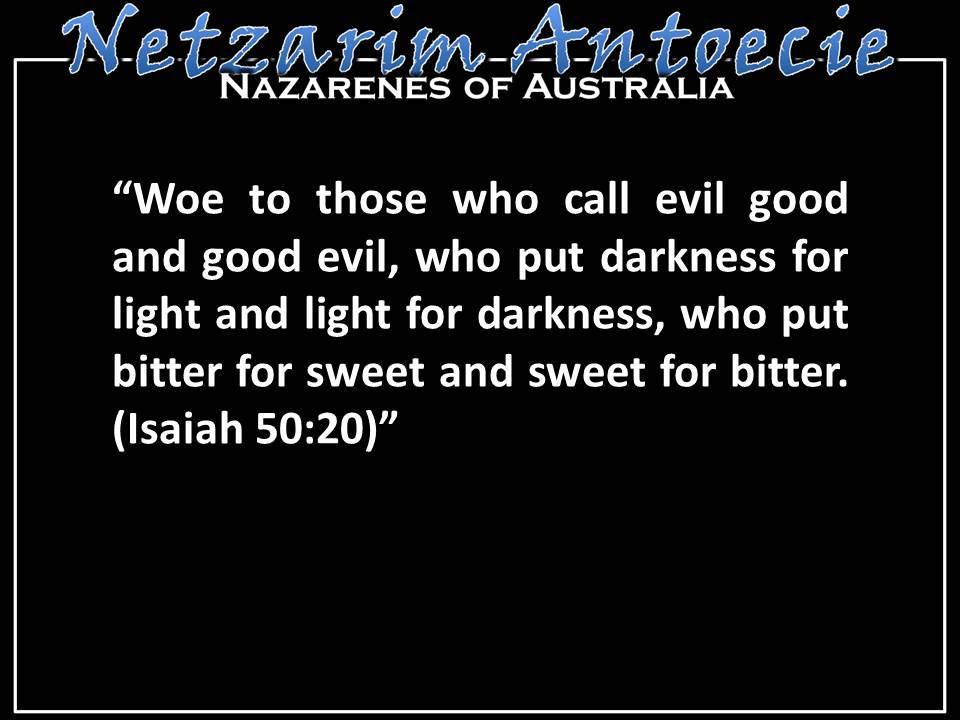Viewing entries in
Exposing Truth Series
Video Teaching
NOTE: Due to internet restrictions from moving homes, soon we will upload full version of this teaching that will not have segments in the near future.
Thanking you Netzarim.
Segment 1
Segment 2
Segment 3
Segment 4
Audio Teaching (Downloadable)
Study Notes and Slides
Halloween - Reckoning the Season
Halloween has taken Australia by storm. Walk into a popular shopping centre and you are assaulted by an overwhelming array of Halloween merchandise in the form of witches, monsters, and all sorts of spooky paraphernalia. Oh that one of the Hebrew holidays would receive such a revival in this dry and barren land!
But let’s be perfectly honest here. The human psyche is geared to like a good story and the more thrills and spills it has, the more it captivates our imaginations. Scripture alone attests to this, being filled with harrowing tales, often not ended well.
Before we examine Halloween, let’s clear a few things up regarding the natural human need to experience fear. Why do people chase fear and is it healthy?
The answer is yes, human beings have an in-built desire to fear. Fear preserves life; it’s the thing that stops us from jumping off a cliff, speaking inappropriately or even assaulting someone.
Every good fair has a haunted house attraction. Why? Because being scared exhilarates people and reminds them that life is good. That’s why for the first five minutes after riding a roller-coaster, everyone is jumping up and down like chickens and then they gradually calm down and return to normal.
Fear enables a believer to calculate their true spiritual standing before the Almighty, causing them to avoid being conceited, puffed-up or narcissistic. Fear switches on every awareness button you have. (Slide) “Therefore, my dear friends, as you have always obeyed--not only in my presence, but now much more in my absence--continue to work out your salvation with fear and trembling.” (Philippians 2:12)
“I will tell you, my friends, do not be afraid of those who kill the body and after that can do no more. But I will show you whom you should fear: Fear Him who, after the killing of the body, has power to throw you into Gehenna.” (Luke 12:4-5)
“Whoever fears Yahweh has a secure fortress, and for their children it will be a refuge.” (Proverbs 14:26)
“He will bless those who fear Yahweh-- small and great alike.” (Psalm 115:13)
“The Spirit of Yahweh will rest on him-- the Spirit of wisdom and of understanding, the Spirit of counsel and of might, the Spirit of the knowledge and fear of Yahweh—and he will delight in the fear of Yahweh.” (Isaiah 11:2-3a)
“The fear of Yahweh is the beginning of wisdom; all who follow his precepts have good understanding. To him belongs eternal praise.” (Proverbs 111:10)
The Torah accords great value in the proper application of fear. In Hebrew, fear is called yirah and contains the root raah, which means “to see.” In other words, to truly fear, is to truly see.
There is another type of fear called pachad, which means “dread.” This is an irrational or overreacted fear. This type of fear is uncomfortable and threatening. We are to practice yirah, not pachad. Fear of heaven should be a constant mitzvah. “…continue to work out your salvation with fear and trembling.” (Philippians 2:12b)
Yirah is not paralyzing or debilitating. On the contrary, it can generate super-human feats. Facing fear is empowering. It gives you the strength you never knew you had. It’s the reason why a mother can lift a car off her trapped child.
The enemy knows that fear is a virtue, so it seeks man’s use of it in relation to the Sitra Achura (the side of impurity), rather than on the Sitra D'Kedushah (the side of holiness). The name of the game is to get you to fear HaSatan, rather than HaShem.
The Talmud says: "Everything is in the hands of heaven – except for fear of Elohim." Fear of Elohim is completely up to us. If you want it, you've got it. This is the essence of free will.
The fear of Yahweh carries everything else.
When a person dies, he is summoned for judgment to the heavenly court, where he is asked the following questions:
- Were you honest in business?
- Did you have a set time for learning every day?
- Did you try to have children?
- Did you yearn for the redemption?
- Did you pursue wisdom and understanding?
Let's say you answer "yes" to everything. You did it all correct. But there's one last question:
- Did you have fear of Elohim?
If not, says the Talmud, you'd be better off having done nothing at all. Fear of Elohim is a deal-breaker.
Why is that? Fearing Yahweh is your "preservative." It keeps your Torah fresh. Torah without fear of Elohim, is like storing wheat without a preservative. The wheat rots.
But in one John we have what appears to be a contradiction. “There is no fear in love. But perfect love drives out fear, because fear has to do with punishment. The one who fears is not made perfect in love.” (1 John 4:18)
The Greek word here is φόβος (phobos) and it means dread or extreme terror. In other words, ‘There is no terror that should be derived from circumstances when one is in love with Yahweh. Love of Yahweh drives out all fear of any earthly situation, even physical punishment. The one who still fears what the earth can muster to terrorize him, is not yet perfected in Messiah’s love.’
The fear of Elohim is as much a Netzarim Ketuvim teaching as it is a teaching throughout the TaNaK. “Show proper respect to everyone, love the family of believers, fear Elohim, honour the emperor.” (1 Peter 2:17)
You might have thought you’d just be getting dirt on Halloween, but the word says, “be wise to what is good and innocent to what is evil.” (Romans 16:19) But, we get more better results if we say why we shouldn’t partake in something, rather than just say we shouldn’t partake in something.
The backdrop of Halloween is the horror movie. All over America horror movie marathons play around the clock over October 31st. Growing up I always had a love of these types of films. There was something about the journey, normality being impacted upon by a terrifying experience, and through the ordeal, the heroes fend off the forces of evil until victory prevails. Only problem is, they don’t make movies with endings like this much anymore. All the recent Paranormal Activity films portray a family being attacked by some evil spirit with no right of reply and by the time they fathom any notion of what’s going on, they’re all either dead or permanently insane. In the late nineteen-eighties the slasher films started bringing back the slasher, literally resurrecting them at the beginning of each new film until the sequels reached into double figures, with the audience beginning to root for the killer. I began to notice that there is a marked difference between a good scare and blood lust.
Horror, the supernatural and all things that go bump in the night, are big business.
Once a year, Halloween is the reason for the season of dressing up in fantasy costumes, decorating homes with spooky objects, participating in the door-to-door trick-or-treat custom and even bobbing for apples at some horror themed party somewhere.
Few people disagree that Halloween is a pagan holiday. In fact, most people don’t care where a holiday has come from, whether from the Bible or through some cultural or family tradition handed down. You can post your Christmas is pagan banners till the cows come home, but the bottom line is that most people just care whether it equates to a few days off, or if it’s fun to celebrate. (Slide) Dressing up in a fancy-dress costume, going to a party, bobbing for apples and watching scary films is fun. People wouldn’t do it if it wasn’t fun.
I’ve always said that Halloween is my favourite pagan holiday, because it’s the most honest. Yet, this is not entirely the case as the truth has never been the enemy’s strong suite.
Know this, above all else. The dark forces, that is the negative powers that lure a man to do something destructive, can never present themselves in their own natural garb. Never ever! Their own garb would be the end result or outcome of whatever a person chooses to do that is evil. This can never be part of its advertising campaign. The Sitre Achurah needs its own window dressing, that is, people who are wrapped up in it that appear happy and prosperous. Its false-holiday system is meant to recruit and distract through the use of spectacle and entertainment. The distraction is to smother the Hebrew High Holidays that uncannily seem to have a corresponding pagan holiday slated next to each one.
It’s true that Christmas, Easter, Valentine’s Day and Halloween have sinister origins. This means that at their outset, there were dark meanings and practices infused into their very conception. Now most people, say they are fine to practice now as all their harmful elements have been removed. They’ve been sanitised and suitable for use without any harmful effects. This means there has been a removal of any component that carried any type of harmful effects – including death.
While the barbarous nature of the ancient world might seem to have been left well behind, the enactments remain somewhat intact, so much so that their execution is surprisingly the same albeit without the immediate consequences.
The game is simple, acquire the same amount of pagan bloodletting and ritual ceremony that ancient societies once practiced, but be creative about it, so no-one notices. Sounds hard to achieve? Not really.
In ancient Britain and Ireland at around October 31st, the time when summer was drawing to a close, there was a Celtic Festival called Samhain. Samhain was known as the annual festival of the Dead. The name means "Summer's End" and pronounced saah-win or saa-ween, Samhain is a celebration of the end of the harvest and the start of the coldest half of the year. For many practitioners, it was regarded as the beginning of the spiritual new year.
Originally Halloween, a contraction of “All Hallows Eve” was called Samhain (pronounced /ˈsɑːwɪn/ SAH-win or /ˈsaʊ.ɪn/ SOW-in) and is a Gaelic festival marking the end of the harvest season and the beginning of winter or the "darker half" of the year.
Historically, it was widely observed throughout Ireland, Scotland and the Isle of Man. Samhain is believed to have Celtic pagan origins and there is evidence it has been an important date since ancient times.
In the 9th century CE, Western Christianity shifted the date of All Saints Day to 1 November, while 2 November later became All Souls Day. Over time, Samhain and All Saints'/All Souls‘ merged to create the modern Halloween. Historians have used the name 'Samhain' to refer to Gaelic 'Halloween' customs up until the 19th century.
Some facts about the original practices of Samhain A.K.A. Halloween are as follows:
First-born sacrifices are mentioned in a poem in the Dindshenchas, which records that children were sacrificed each Samhain . . . (Rogers, Nicholas. Halloween: From Pagan Ritual to Party Night, p. 17)
Halloween. That was the eve of Samhain . . . firstborn children were sacrificed. . . Samhain eve was a night of dread and danger. (National Geographic. May 1977, pp. 625-626)
The Druids would drink their victim’s blood and eat their flesh.
They [Druids] sacrificed victims by shooting them with arrows, impaling them on stakes, stabbing them, slitting their throats over cauldrons (and then drinking the blood). . . (Guiley, Rosemary Ellen. Harper’s Encyclopedia of Mystical & Paranormal Experience, p. 167)
Therefore we cannot too highly appreciate our debt to the Romans for having put an end to this monstrous cult, whereby to murder a man was an act of the greatest devoutness, and to eat his flesh most beneficial. (Pliny, Natural History, xxx, 13)
The Druids "counted it an honourable thing" to eat their father’s flesh and perform incest with their mothers and sisters.
. . . since they are man-eaters as well as heavy eaters, and since, further, they count it an honourable thing, when their fathers die, to devour them, and openly to have intercourse, not only with the other women, but also with their mothers and sisters;. . . (Strabo, Geography)
As one of the customs, druids would visit homes to acquire offerings to appease the spirits of the dead, who were said to be able to cause mischief upon the living and bring about a harsh winter. If no offerings were presented, a child of the home was taken by force as the offering and burned atop one of many bonfires (bone fires). The word “bone fire” earnt its name due to the bones of sacrificial victims being all that usually remained after the pyre burnt out.
One thing that should strike fear into the heart of a modern day, seemingly rational 21st century person, is the yearly death rate of aborted foetuses as opposed to the kill rate of sacrificed infants in all known pagan societies of the past. The current global 1st world society leads the way in the sheer volume of yearly disposed of human beings beyond any previous people, no matter how barbaric that has ever previously existed. We kill more people than the Inca’s ever did in a given year. Sure, it isn’t atop a temple with a crude cutting implement that is brought down to sever a head in the midst of a religious ritual, but our deaths are more clinical, more behind-the-scenes. Furthermore, our deaths are usually for reasons like a desire to not lose a girlish figure or because of the impact a baby might have upon comfortable lifestyle. In contrast, the death of an infant by a pagan society was looked upon as a mighty gift to a deity, a true sacrifice, that is the giving of the most valuable thing a person can imagine, their very own child. As misguided as such an act would be, the motive is far more anchored in truth and reality, than the most common motive for aborting a child today. What is the most common reason? Well most papers and articles say it’s because of a perceived inability to support the child, this is despite many would-be mums and dads living in societies that provide every assistance at every phase of a child’s birth and development. But the truth is, if you are able to read between the lines of many politically correct papers, is that abortion is most commonly opted for after birth control measures have failed. Usually, and I stress “usually,” a baby has every reason not to live by a person because it will in some way burden another’s existence. So the most common reason we kill now is usually because we see no positive merit in something that pagans believed had the most supreme value – hence their offering up of them to idols. So which society is more barbaric and twisted?
If you’re interested in seeing some facts and figures on abortion rates, hop onto the US Abortion Clock @ http://www.numberofabortions.com/ This shows the daily count and you’ll notice the clock ticking over while you’re on the site live – creepy.
The jack-o’-lantern is very much the symbol of Halloween and yet many historians are baffled as to its true origin. The best you’ll get is some cute story about a guy named jack who tricked the devil into being denied his soul. In actuality it is a reference to Druidic practice of displaying the severed heads of their sacrifices. The Druids rightly believed that the skull houses the soul and they believed by exhibiting them as ornaments rather than burying them, it would ward of any attacks by vengeful spirits.
The hollowed out pumpkin perfectly reflects this original practice with the light of the candle inside representing the light of the soul.
Trophy, charm, or ornament, the human head figured prominently in Celtic life. Warriors hung enemy heads on their houses as a show of prowess, and Druids, believing that the head harboured the soul, placed skulls in sanctuaries to ward off evil. (National Geographic, May 1977, p. 603). . . they hang the heads of their enemies from the necks of their horses, and, when they have brought them home, nail the spectacle to the entrances of their homes. . .(Strabo, Geography)It is believed that faces, rather than other images or symbols, were originally carved onto the pumpkin because they gave the jack-o’-lantern the look of a head. The Celts of ancient times believed that the head was the most sacred part of the human body, for it housed a person’s immortal soul. (Dunwich, Gerina. The Pagan Book of Halloween, p. 32)
. . . the jack-o’-lantern is generally presented in its traditional form as a festive euphemism for the death’s-head, the triangular nose hole and rictus grin being the "dead" giveaways. (Skal, David J. Death Makes a Holiday: The Cultural History of Halloween, p. 38) Carved and illuminated by a candle, they are symbolic of death and the spirit world. (Thompson, Sue Ellen. Holiday Symbols and Customs, p. 256)
The custom for dressing us stemmed from the practice of hoping to confuse evil spirits. People would dress as animals, so that they might be spared any trickery or foul play over the festival.
A modern problem with Halloween is the sharp escalation in crime and theft of the period. According to James Alan Fox, a professor at Boston’s North eastern University, criminal activity tends to increase on three specific holidays — New Year’s Eve, Independence Day and Halloween. Between 2006 and 2009, crime around the city of Boston was 50 percent higher on October 31 than any other date all year. Similarly, in Canada, police have reported a 50 percent upsurge of weapon-related felonies during Halloween.
The custom for bobbing for apples on Halloween stems from an addition to the Holiday in its early development. The ceremony of Halloween underwent an infusion of other pagan influences when the Celt homeland was absorbed by the Roman Empire. While Rome allowed the Druid priests to continue all their ceremonies, "except human sacrifice," new rituals of Roman origins were also incorporated. "Chief among them was the worship of Pomona, goddess of the harvest. Representing bounty and fecundity, Pomona was shown in art sitting on a great basket of fruits and flowers, a horn of plenty at her feet. Apples were the sacred fruit of the goddess, and many games of divination involving apples entered the Samhain customs through her influence. One of the most popular involved bobbing for apples," Common Boundary, Sep./Oct. 1993, p. 30.
Jeremiah 10:2 says, “Do not learn the way of the Heathen…” On the contrary, we are to follow the example of Israel as they follow Moshiach.
“The cup of blessing which we bless, is it not the communion of the blood of Messiah? The bread which we break, is it not the communion of the body of Messiah? For we, though many, are one bread and one body; for we all partake of that one bread. Observe Israel after the flesh: Are not those who eat of the sacrifices partakers of the altar? What am I saying then? That an idol is anything, or what is offered to idols is anything? Rather, that the things which the Gentiles sacrifice they sacrifice to demons and not to Yahweh, and I do not want you to have fellowship with demons. You cannot drink the cup of Yahweh and the cup of demons; you cannot partake of Yahweh's table and of the table of demons. Or do we provoke Yahweh to jealousy? Are we stronger than He? (1 Corinthians 10:16-22)”
That those who eat festival sacrifices become united with the deity to whom those sacrifices are made is obvious. (v16-18)
That though the food partaken of is itself not intrinsically changed (v19), when a person partakes of and shares in a pagan feast or celebration, they becomes partner with the spirits of evil, the demon host who daily defy the dictates of the Almighty. (20-21)
In other words when a person celebrates Christmas or any other pagan festival, which was and still is motivated by the forces of evil, they are honoring the demons who conceived that pagan festival in the first place; demons who are totally opposed to the Holy Spirit; and who go out of their way too prompt mankind into committing all kinds of evil at their winter and spring festivals. In other words the so-called "spirit of Xmas" is not the Holy Spirit of Yahweh but the Spirit of greed, drunkenness, violence and debauchery all of which are the hallmarks of the pagan holidays.
“‘Fallen! Fallen is Babylon the Great!’ She has become a dwelling for demons and a haunt for every impure spirit…Come out of her, my people,’ so that you will not share in her sins, so that you will not receive any of her plagues; for her sins are piled up to heaven, and Yahweh has remembered her crimes… Come out of her, my people, so that you will not share in her sins, so that you will not receive any of her plagues; for her sins are piled up to heaven, and Yahweh has remembered her crimes. Give back to her as she has given; pay her back double for what she has done. Pour her a double portion from her own cup. Give her as much torment and grief as the glory and luxury she gave herself. In her heart she boasts, “I sit enthroned as queen. I am not a widow; I will never mourn.” Therefore in one day her plagues will overtake her: death, mourning and famine. She will be consumed by fire, for mighty is Yahweh our Elohim who judges her.’” (Revelation 18:2, 4, 5-8)
PDF Downloads
If this teaching or any other teachings have been a blessing to you please consider our congregation for donations and offerings.
All our teachings are free and as such rely on the generosity of our community.
Thanking you from Nazarenes of Australia.
Disclaimer
Please note the following 2 teachings "Truth about the eye in the triangle" and part 2 "Isn't It A'aronic" are in no way supporting the works of secret societies of the world, these teachings are designed to expose the truths of what was once sacred are now being used to push agendas to move people away from our Heavenly Father and the truth in Sciprutres. As such we highly recommend watching the 3 video segments and then reading the study notes and slides to get a greater understanding on this subject. Thank you Netzarim Antoecie (Nazarenes of Australia)
The Truth about the Eye in the Triangle – Part 2
Isn’t It Aaronic?
Introduction
Last week we established that the Hebrew letter, the dalet, is the origin of the triangle, a three edged polygon with three vertices. We looked at how it represents our relationship with Yahweh, His Divine protection, and how it relates to Messiah himself being our top and corner stone. As Acts 4:11 reads: “Yahshua is 'the stone you builders rejected, which has become κεφαλή (kephalē) εἰς (eis) γωνία (gōnia), which means “The head of the corner.”
We saw how a world-wide luciferian order has hijacked the sacred dalet and the Megan David (The Star of David) by imbuing them with opposing forces, superimposing HaSatan into their meaning, elevating his role to supreme deity, thus changing their association with good to evil. “(HaSatan) opposes and exalts himself above all that is called Elohim, or that is worshipped; so that he as Elohim sits in the Temple of Elohim, showing himself that he is Elohim. (2 Thessalonians 2:4)” “I will ascend above the heights of the clouds; I will be like the most High (Isaiah 14:14)”
The enemy wants to set up an imitation kingdom. Forget about Hollywood’s portrayal of the Devil. He is never mentioned flourishing in an underworld with a lake of fire. In fact, the only time he is mentioned being in proximity to fire is before his fall from grace and then at his demise fire is mentioned again.
We found that the three pyramids on the Giza Pleatu in Egypt were not in fact Egyptian. They were erected by Noach’s grandfather, Enoch and his ancestors (the sons of Seth), in the predeluge era as a continuing memorial of Yahweh’s plan of salvation. “He has made a memorial for His wonders. (Psalms 111:4)” “In that day there will be an altar to Yahweh in the heart of Egypt, and a monument to Yahweh at its border. It will be a sign and witness to Yahweh Almighty in the land of Egypt. When they cry out to Yahweh because of their oppressors, he will send them a saviour and defender, and he will rescue them. (Isaiah 19:19-20)” “You performed signs and wonders in Egypt and have continued them to this day, in Israel and among all mankind, and have gained the renown that is still yours. (Jeremiah 32:20)”
It came as a shock to us to see the Pyramids of Egypt in such light and it brought it home to us how the enemy has tried to pervert nearly everything that we hold dear about our faith, including our worship, our language, our mission and our people. Even astrology was ours, it was called hokmat ha-nissayon, which means "the wisdom of prognostication.” This is why the commonly used congratulatory phrase “Mazel Tov” means “Hope your offspring is born in a good constellation.” Numerology was ours, it was called Gematria, the assignment of numerical value to Hebrew letters and words. And know this, that the same symbology, that is, the correct symbolic representations of things in the Book of Revelations corresponds to the same symbology used in Kabbalah. For example, a white horse that represents pestilence in the Book of Revelation has the same representation in kabbalah and even Tarot cards. Those of you that have Jewish publications, books, etc, notice that these books open in the opposite direction, from the back to the front, in actuality the back is the front. So the enemy wants you to read backwards when we should be reading in the opposite direction, the true direction.
Today, Yah willing, we will strive to go deeper.
The Gift to the Generous Ones
The Eye in the Triangle has a link to the A’aronic Priesthood or the Kohanim as they are called in Hebrew. The Kohanim descended from the Kohan HaGodol (High Priest), A’aron, Moshe Rabbeinu’s older brother. A’aron and Moshe were both of the Tribe of Levi. They were charged with working the Tabernacle and assist the Israelites in blessings, ministering, sacrifices and leading atonement rituals for the sins of the people. “Instead, appoint the Levites to be in charge of the tabernacle of the covenant law--over all its furnishings and everything belonging to it. They are to carry the tabernacle and all its furnishings; they are to take care of it and encamp around it. (Numbers 1:50)”
The word Kohan is usually translated as “priest.” That’s fine, but what does the word priest mean? Priest means “ordained minister.” But what does that mean? Minister can mean “head of the clergy,” but what does clergy mean? Clergy means priesthood. Feel like you’re going in circles?
The name Kohan literally means “friend who works diligently to achieve Divine harmony in a masterful way.” A’aron was a descendant of the tribe of Levi. So all Kohanim are Levites, but not all Levites are Kohanim. A’aron was worthy of receiving the priesthood, because he was one who loved peace, pursued peace, loved Elohim’s creatures and drew them close to Torah (Ethics of the Fathers 1:12) While Moshe is the more dominant figure in the Torah, A’aron is always a full and integral partner in the events and undertakings that forge a clan of liberated slaves into Yahweh’s people. It is as if Moshe cannot accomplish anything without A’aron, and A’aron in turn is likewise dependent upon Moshe in the fulfillment of his role. This was to be the model of the Priestly class and the rest of the nation of Israel. Moshe and A’aron were commissioned to create a people who would serve as Yahweh’s “light unto the nations”—as the disseminators of Elohim’s wisdom and will to His creation.
A’aron had a weight with the people; he was notable for his kindness and generosity. This is why he and his descendants were given the A’aronic Blessing. It is also known as the birkat kohanim (the priestly blessing) or the nesiat kapayim (the raising of the hands). Many of you are familiar with the A’aronic Blessing. It is found in its complete form in Numbers 6:22-27 and is the most famous blessing in all the Scriptures. It was entrusted by Yahweh to the priestly class of the nation of Israel, known as the Kohanim, to be bestowed upon the people. A blessing or bracha in Hebrew means the drawing down of spiritual energy.
In turn the recipient Israelite is entrusted with the task of building a spiritual vessel with his obedience, which is to contain the spiritual energy that comes from receiving blessings. So a blessing can miss its mark in three ways. Either the giver and receiver of the blessing are deficient, the second is that just the giver is deficient, and the third and most common is that the recipient is insufficiently equipped to hold onto the spiritual energy that flows down to him.
A blessing can only be given by one who is in a state of generosity and kindness. So in order for the Kohanim to give these blessings effectively, they must be benevolent and kind towards their fellow Israelites. This is why A’aron and his descendants received the ability to bless the nation of Israel. This is why the Sages say “A generous man will give blessings.” The A’aronic Blessing is a very special gift appointed by Yahweh to be performed by the Kohanim as conduits to bestow a very powerful communal blessing.
Originally, Yahweh was the one who blessed people in this world. He did so to Adam, Noach and then to Avraham. In addition, he told Avraham that from that time on, Avraham would have the power to bless people. Avraham did not want to bless his children as Yishmael was one of them. Instead, Elohim himself blessed Yitzhak who in turn blessed Yaakov. Yaakov blessed his twelve sons before he passed away. Eventually Elohim told Moshe that the power to bless the Israel was now in the hands of the Kohanim
Most people are familiar with the English translation of the A’aronic blessing, which reads, “The LORD bless you and keep you: The LORD make his face to shine upon you, and be gracious to you: The LORD lift up his countenance upon you, and give you peace. (Numbers 6:24-26 RSV)”
Notice that many of the words in this translation are abstract words, including; bless, keep, gracious, countenance and peace. Each of the Hebrew words behind the English in this passage is filled with images that are lost when translated into the English language. What’s a bless, what’s a gracious, what’s a countenance, what’s a peace?
When we examine each of these words from their original cultural and linguistic perspectives, the message in this passage comes alive.
Here’s what the A’aronic Blessing really says: “Yahweh will kneel before you presenting gifts and will guard you with a hedge of protection, Yahweh will illuminate the wholeness of His being toward you bring order and he will beautify you, Yahweh will lift up His wholeness of being and look upon you and He will set in place all you need to be whole and complete.”
Let’s break down the text.
Bless: The Hebrew verb ברך (Barakh, Strong's #1288) means to kneel as seen in Genesis 24:11. However, when written in the piel form, such as it is in Aaronic blessing, it means to show respect (usually translated as bless). However, as "respect" is an abstract word, we need to uncover its original concrete meaning, which we can do by examining other words related to this verb. One such related word is the noun ברך (berekh, Strong's #1288) meaning "knee." Another related Hebrew word is ברכה (berakhah, Strong's #1293) meaning a gift or present. From this we can see the concrete meaning behind the piel form of the verb barak. It is to bring a gift to another while kneeling out of respect. The extended meaning of this word is to do or give something of value to another. Elohiym "respects" us by providing for our needs and we in turn "respect" Elohiym by giving him of ourselves as his servants.
Keep: The Hebrews were a nomadic people raising livestock. It would not be uncommon for a shepherd to be out with his flock, away from the camp, over the night. In order to protect the flock, the shepherd would construct a corral of thorn bushes. The shepherd would then guard over the flock and the corral would be a hedge of protection around them. The Hebrew word for a thorn is שמיר (shamiyr, Strong's #8068) and derived from the verb שמר (shamar, Strong's #8104), which literally means to guard and protect and is the word used in the Aaronic blessing.
Face: When one looks at a painting of a person, the viewer can"read" the mood of the subject by the facial expression. The face reflects the many different moods, emotions, and thoughts of the person. The Hebrew word פנים (paniym, Strong's #6440), means "face," but is always written in the plural form (the ים suffix identifies this word as plural), reflecting this idea of multiple faces of each person. This word can also mean “presence” or the “wholeness of being” of an individual.
Shine: The word awr אור (or, Strong's #215), as a noun means "light" and as a verb, as it is used here, means to "give light" or "shine" and is equated with bringing about order as light illuminates or reveals what has been dark.
Gracious: Most theologians will define “grace” as “unmerited favour,” but notice the abstractness of these words. The Hebrew verb translated as gracious in the Aaronic blessing is the verb חנן (hhanan, Strong's #2603) and is often paralleled with other Hebrew words meaning healing, help, being lifted up, finding refuge, strength and rescue. From a concrete Hebraic perspective this verb means to “provide protection.” Where does one run to for protection? The camp, which in Hebrew is חנה (hanah, Strong's #2583), a word related to חנן (hhanan).
Grant: The Hebrew verb שים (siym, Strong's #7760), literally means to "set down in a fixed and arranged place."
Peace: When we hear the word peace we usually associate this to mean an absence of war or strife. However, the Hebrew word שלום (shalom, Strong's #7965) has a very different meaning. The root of this word is שלם (shalam, Strong's #7999) and is usually used in the context of making restitution. When a person has caused another to become deficient in some way, such as a loss of livestock, it is the responsibility of the person who created the deficiency to restore what has been taken, lost or stolen. The verb shalam literally means to make whole or complete. The noun shalom has the more literal meaning of being in a state of wholeness, or being without deficiency.
Along with the A’aronic Blessing came the hand gesture, which most of you are familiar with. In Torah, body position in prayer is absolutely paramount, though often ignored by people who can’t see much Scriptural evidence for its direction. Nothing could be further from the truth.
There are times we should be seated low to the ground, standing straight, bowing, even raising up on tippy-toes. There are times we should have our head bowed, be seated, even moving vigorously. Body position is as critical in prayer or when dispensing a blessing as it is in a job interview. To someone who says, ‘G-d doesn’t care about what you’re body parts do in prayer,’ should be asked, ‘Well, did it matter that Moshe had his arms raised for the duration of the Israelites battle against Amalekites?’ Every time he lowered his arms Israel was in trouble. Yahweh does command us to raise our hands, especially in the sanctuary! “Lift up your hands in the sanctuary and praise Yahweh (Psalm 143:2)” You think the A’aronic Blessing was administered from it’s very outset with the giver’s arms raised in the sanctuary at most other times and then tied to his side in the finale. This is like a stadium full of football fans raising their arms in excitement throughout a game and at the end when their team wins their arms are nowhere to be seen.
“Now as Solomon finished offering all this prayer and plea to the Lord, he arose from before the altar of the Lord, where he had knelt with hands outstretched toward heaven.(1 Kings 8:54)”
“And Ezra blessed Adonai, the great Elohim, and all the people answered, “Amen, Amen,” lifting up their hands. And they bowed their heads and worshiped Adonai with their faces to the ground. (Nehemiah 8:6)”
“I desire then that in every place the men should pray, lifting holy hands without anger or quarrelling…(1 Thessalonians 2:8)”
“Then he led them out as far as Bethany, and lifting up his hands he blessed them. (Luke 24:50)”
The A’aronic blessing, the final parting word of the day’s service to Yahweh was certainly not an armless affair? No power could restrain the arms here. The arms extended out to direct the blessing. It was a gesture, given to show that it was an act of giving something.
Next, some of you may have noticed opened palms with fingers specifically arrayed as the blessing is administered.
Some of you might remember Mr. Spock in Star Trek, played by Leonard Nimoy. In the series, his character was half-Vulcon and did what’s called a Vulcan salute, a greeting that was devised by the actor himself who was Jewish, to help sell the alien cultural background of his character.
In Leonard Nimoy’s autobiography I Am Not Spock, Nimoy wrote that he based the Vulcon Salute on the Priestly Blessing performed by Jewish Kohanim with both hands, thumb to thumb in this same position, representing the Hebrew letter Shin (ש), which has three upward strokes similar to the position of the thumb and fingers in the salute. The letter Shin here stands for El Shaddai, meaning "Mighty One of Spirits", as well as for Shekinah and Shalom. Nimoy wrote that when he was a child, his grandfather took him to an Orthodox synagogue, where he saw the blessing performed and was impressed by it
The hand gesture was taken from the A’aronic Blessing that he saw performed in Synagogues when he was growing up. This format is similar to common Middle Eastern greetings (Salaam alaykum in Arabic and Shalom aleikhem in Hebrew), meaning “peace be upon you,” and its reply, “upon you be peace.”
There are many variations of the hand gesture depending on the sect of Judaism. The one I prefer, is the one with the joined thumbs and forefingers with the right eye of mercy behind. Which one is right? Who knows. But until we know the correct formation of the hands, if there is indeed a correct way, it’s down to personal preference.
The woman of the home’s hand motions over the Shabbat candles are a form of self-administer A’aronic Blessing. Traditionally, the woman of the house would light the Shabbat candles and then wave her hands over the flames and draw them up toward her face, bringing them up to cover her eyes on the final pass. At this point she makes a silent prayer to Yahweh that only she has the power to draw down. Each hand wave over the candles symbolises the power to live (nefesh); the mind/will (ru'ach), and the spirit (neshamah) in that she receives the Shabbat Presence into all three layers of a person’s make-up. With each wave of the hands, one should consciously take a deep breath and try to feel the atmosphere of Shabbat touching another aspect of your being.
It’s no wonder the enemy has made an attack on our most gracious gift from the Almighty, the birkat kohanim (the priestly blessing), that flows through the stone, the upper, corner stone that represents the stone the builder’s rejected – Yahshua HaMoshiach.
If you want to keep jumping the boogie-man every time you see a triangle be my guest, but don’t you think it’s time to take back the truth, undress it from its outer layer of false-hood and claim it back in the name of Yahshua HaMoshiach!
Don’t get caught up in all this hocus-pocus about vein subjects. Such people look for a devil under every rock. My hope is that whenever you see a triangle, you’ll say a quite blessing and thank Yahweh for the knowledge he’s given you to know the truth. Because “Woe to those who call evil good and good evil, who put darkness for light and light for darkness, who put bitter for sweet and sweet for bitter. (Isaiah 50:20)”


























